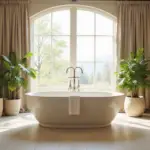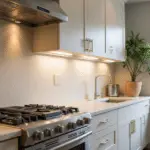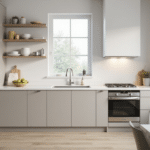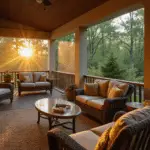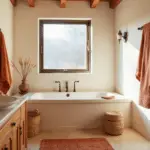Imagine this: you’re grilling fresh-caught salmon under the shimmering Northern Lights, the crisp Alaskan air nipping at your nose. Sounds perfect, right? But here’s the catch – Mother Nature isn’t always kind to our culinary ambitions. That’s why creating a weatherproof backyard kitchen isn’t just a luxury; it’s a necessity for those of us who believe that the great outdoors is the best dining room.
As someone who’s designed homes that can withstand Arctic blizzards, I can tell you that building a durable outdoor kitchen is like preparing for the Iditarod – it’s all about having the right gear and knowing how to use it. From materials that laugh in the face of a snowstorm to designs that shrug off summer downpours, we’re going to explore how to create an outdoor culinary haven that’s as resilient as a seasoned musher.
So, grab your favorite flannel, and let’s embark on a journey to transform your backyard into a year-round cooking paradise that would make even the toughest Alaskan homesteader nod in approval.

Choosing Durable Materials
When it comes to outdoor kitchens, choosing the right materials is like selecting the perfect sled dog team – each component needs to pull its weight and work in harmony with the others.
Best Materials
In the world of outdoor kitchens, you want warriors that can stand up to UV rays, rain, snow, and maybe even the occasional curious moose. Stainless steel is your trusty lead dog here – it’s the Balto of outdoor kitchen materials, leading the pack with its resistance to rust and corrosion. For countertops, think of stone as your sturdy wheel dog – granite and quartz are like the rocky Alaskan coastline, beautiful and unyielding in the face of the elements.
Comparing Wood and Concrete
Wood brings warmth and natural beauty to your outdoor space, reminiscent of a cozy Alaskan cabin. However, like a husky in the summer, it can get a bit uncomfortable in extreme weather. Concrete, on the other hand, is more like a malamute – sturdy and reliable, but not without its quirks. It’s more stable than wood and can handle temperature swings like a champ, but it can chip over time if not treated with respect.

Stainless Steel Benefits
Stainless steel is the true MVP of outdoor kitchens. It’s like the trusty snowmobile of the culinary world – reliable, easy to maintain, and always ready for action. Its resistance to rust and corrosion makes it ideal for outdoor use, whether you’re dealing with salty sea spray in coastal Alaska or the humidity of a temperate rainforest.
Long-Lasting Options
For those looking to create an outdoor kitchen that’ll outlast even the most enduring Alaskan glaciers, consider materials like granite, stainless steel, and composite materials. These are the wolverines of the material world – tough, resilient, and able to handle whatever comes their way.
As we forge ahead in our outdoor kitchen adventure, remember that choosing the right materials is just the first step. Next, we’ll explore how to protect these materials from the whims of weather, ensuring your outdoor culinary haven stands strong for years to come.
Weatherproofing Tips
Now that we’ve assembled our dream team of materials, it’s time to set them up for battle against the elements. Think of weatherproofing as outfitting your outdoor kitchen with the best gear before a long expedition into the Alaskan wilderness.
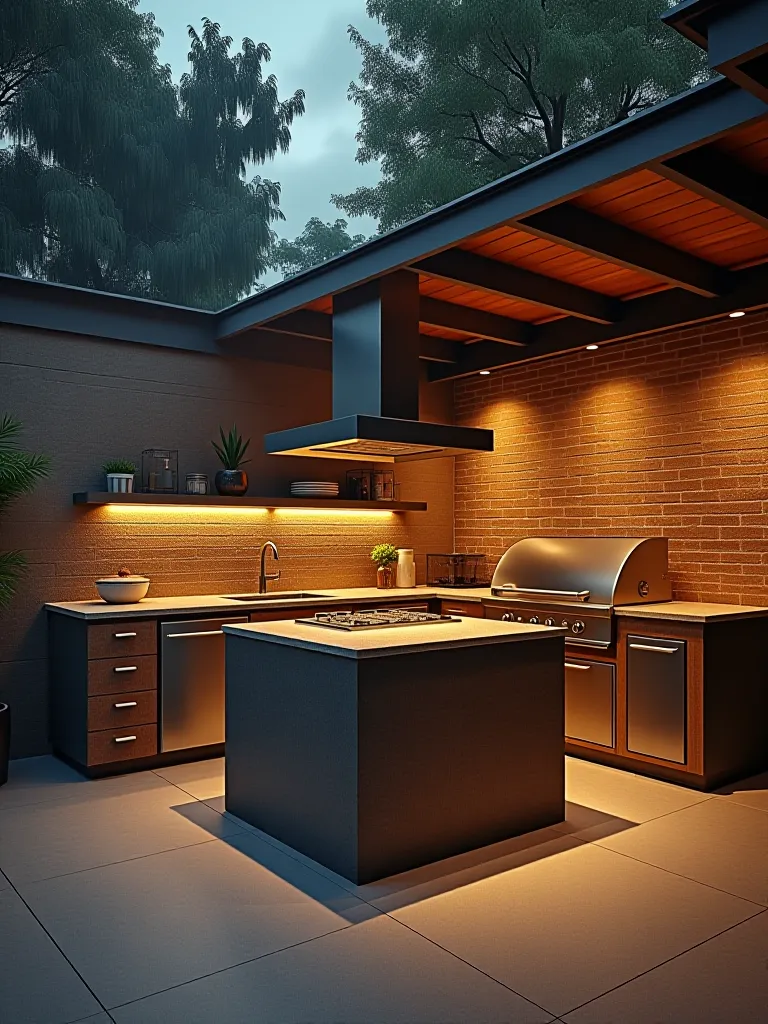
Using Protective Covers
Protective covers are the parkas of the outdoor kitchen world, essential for shielding your cooking gear from nature’s mood swings. Opt for waterproof materials that can handle rain, snow, and whatever else the sky might throw down. Custom-fit covers are your best bet – they’re like tailored expedition suits, designed to snugly protect every nook and cranny of your outdoor kitchen.
Winterizing Strategies
Winter in Alaska isn’t just a season; it’s a full-contact sport. The same goes for your outdoor kitchen when the mercury drops. Start by draining all water lines – frozen pipes can burst faster than a salmon can swim upstream. Use antifreeze in plumbing systems, treating them with the same care you’d give to a snowmobile before storing it for the summer.
Preventing Rust
Rust is the silent enemy of outdoor kitchens, sneaking in like a crafty fox and causing damage before you even notice. To keep rust at bay, apply rust-resistant coatings to all exposed metal parts. Think of it as giving your kitchen a protective layer, like the natural oils that keep a polar bear’s coat waterproof.

Damage Prevention
To protect your outdoor kitchen from becoming Dorothy’s house in “The Wizard of Oz,” consider installing windbreaks. These can be as simple as strategically placed shrubs or as elaborate as a custom-built wall. Think of them as the lee side of a mountain, offering shelter from the strongest gusts.
As we wrap up our weatherproofing strategies, remember that protecting your outdoor kitchen is an ongoing process, much like maintaining a homestead. It requires vigilance, regular care, and a healthy respect for the forces of nature.
Cleaning and Maintenance
Maintaining your outdoor kitchen is like caring for a well-used trail – regular attention keeps it in top shape for years of enjoyment. Let’s explore some strategies to keep your culinary basecamp clean, functional, and ready for action, whether you’re grilling up a storm or maximizing outdoor kitchen space for a neighborhood potlatch.
Regular Cleaning Routine
Establishing a regular cleaning routine for your outdoor kitchen is as crucial as checking your gear before a wilderness expedition. After each use, give your surfaces a quick wipe-down. It’s like brushing snow off your boots before entering the cabin – a simple habit that prevents bigger problems down the line.

Deep Cleaning Tips
When it’s time for a deep clean, approach it like you would a spring cleaning of your cabin after a long winter. Use specialized cleaners for different materials – what works for stainless steel might not be ideal for wood, just as you’d use different methods to clean your hiking boots versus your snowshoes.
Seasonal Maintenance
As the seasons change in Alaska, so should your maintenance routine. At the start of each season, inspect your outdoor kitchen for any damage that might have occurred during the off-season. Look for cracks or wear that could worsen over time, much like checking your cabin for signs of wear after a harsh winter.
Protecting Appliances
Your outdoor kitchen appliances are like the specialized gear you’d take on an Arctic expedition – valuable, essential, and worth protecting. During extreme weather, consider storing smaller appliances indoors. It’s like bringing your delicate equipment into the tent during a storm.
By maintaining a consistent cleaning and maintenance routine, you’re ensuring that your outdoor kitchen remains a reliable and enjoyable space for years to come. It’s like tending to a favorite campsite – the more care you put in, the more memories you’ll be able to create there.
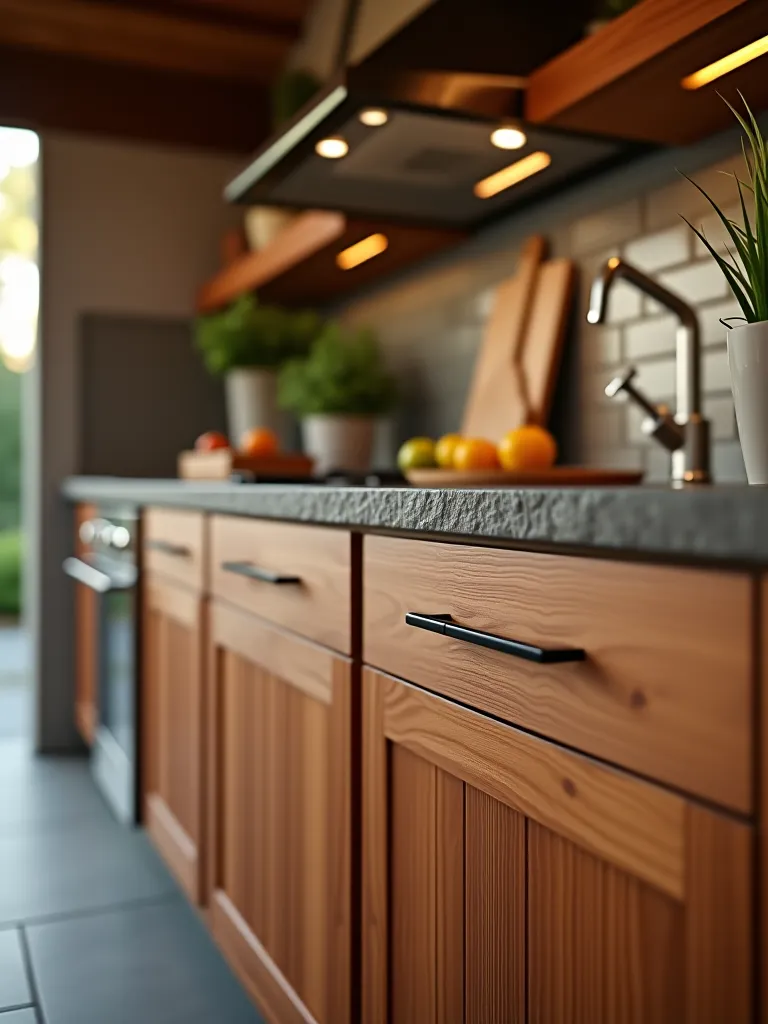
Countertops and Cabinets
When it comes to outdoor kitchens, countertops, and cabinets are like the bedrock and forests of the Alaskan wilderness – they form the foundation and structure of your culinary landscape.
Durable Countertop Choices
Selecting the right countertop for your outdoor kitchen is like choosing the perfect basecamp location for an extended expedition – it needs to be sturdy, reliable, and able to withstand whatever nature throws its way. Granite and quartz are excellent choices, akin to the rugged peaks of the Alaska Range. Concrete offers another solid option, bringing a customizable and sturdy surface to your outdoor kitchen.
One word of caution – avoid laminate countertops in your outdoor kitchen. They’re about as suited to the outdoor elements as a penguin in the Sahara.
Cabinet Protection Tips
Cabinets in your outdoor kitchen need to be as resilient as a bear’s den, protecting your supplies from the whims of weather. If you’re opting for wooden cabinets, make sure they’re treated with weatherproof finishes. For those seeking the ultimate in durability, marine-grade polymer cabinets are worth considering.
Waterproof Storage Solutions
When it comes to storage in your outdoor kitchen, think like you’re packing for a kayak expedition in the Inside Passage. Everything needs to stay dry, no matter what. Storage boxes with rubber seals are excellent for this purpose. They’re like the dry bags of the kitchen world, keeping your items safe from moisture.
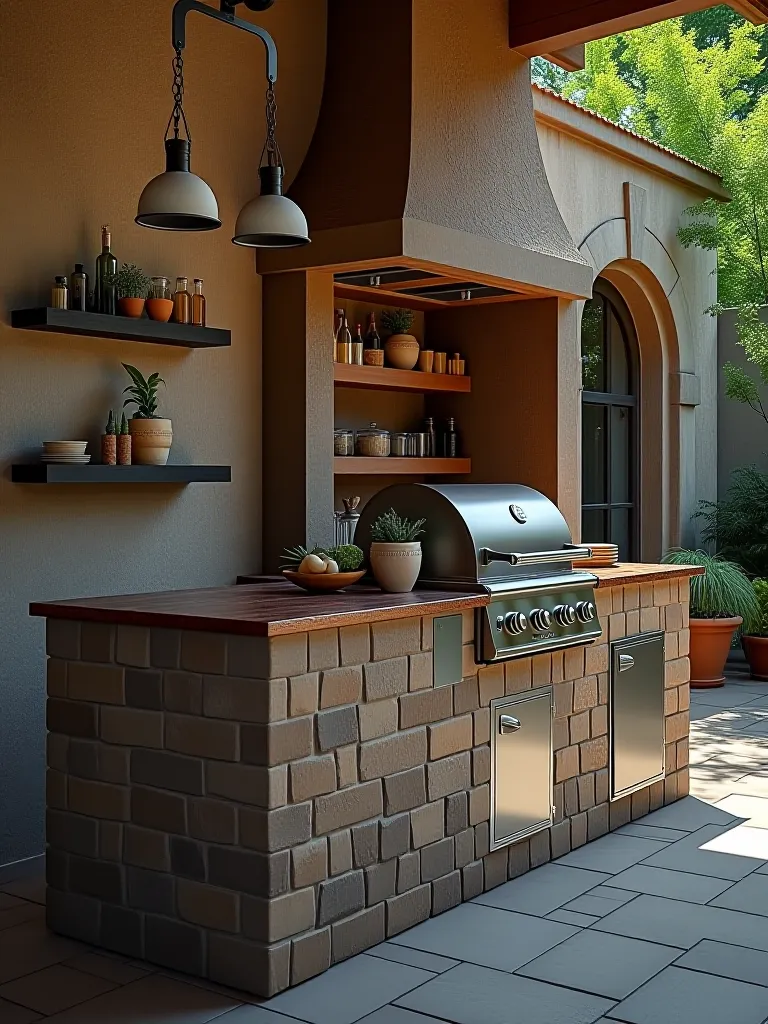
Popular Cladding Choices
The cladding you choose for your outdoor kitchen is like the outer layer of a well-designed igloo – it needs to be both functional and aesthetically pleasing. Stone veneer can give your kitchen a natural look that blends seamlessly with your outdoor environment. Brick provides a classic appearance along with durability, while metal cladding offers an industrial feel that can complement many design styles.
Flooring and Lighting
As we venture into the realm of flooring and lighting for your outdoor kitchen, think of it as setting the stage for your culinary adventures. Just as the right terrain and conditions can make or break an Alaskan expedition, the proper flooring and lighting can transform your outdoor kitchen from a simple cooking area into a magnificent arena for creating and sharing meals under the vast sky.
Best Flooring Options
When it comes to flooring for your outdoor kitchen, you need something as sturdy and reliable as the ground beneath a seasoned musher’s sled. Slip-resistant tiles are a top choice here. They’re like the textured surface of well-worn river rocks – providing a firm grip even when wet.

Stamped concrete offers another excellent option. It’s the chameleon of the flooring world, able to mimic the look of natural stone or tile while providing the durability of, well, concrete. For those looking to bring a touch of warmth to their outdoor space, composite decking is worth considering.
Weather-Resistant Lighting
Lighting your outdoor kitchen is like preparing for the long Alaskan winter nights – you need to be strategic and resourceful. LED lights rated for outdoor use are your best bet here. They’re the Northern Lights of the lighting world – long-lasting, energy-efficient, and able to withstand extreme temperatures.
Solar-powered lights are another great option, especially if you’re looking to minimize your environmental impact. They’re like the fireweed that blooms after a forest fire – self-sufficient and able to thrive in challenging conditions.
Safety Considerations
Safety in your outdoor kitchen should be as much of a priority as it is when traversing a glacier. GFCI outlets are crucial. Think of them as the crevasse rescue gear of the electrical world – they’ll shut off power at the first sign of a ground fault, potentially saving you from a shocking experience.
Proper ventilation is another key safety feature, especially if you’re using gas appliances. Always keep a fire extinguisher within easy reach. It’s the outdoor kitchen equivalent of carrying bear spray – hopefully, you’ll never need it, but you’ll be glad it’s there if you do.
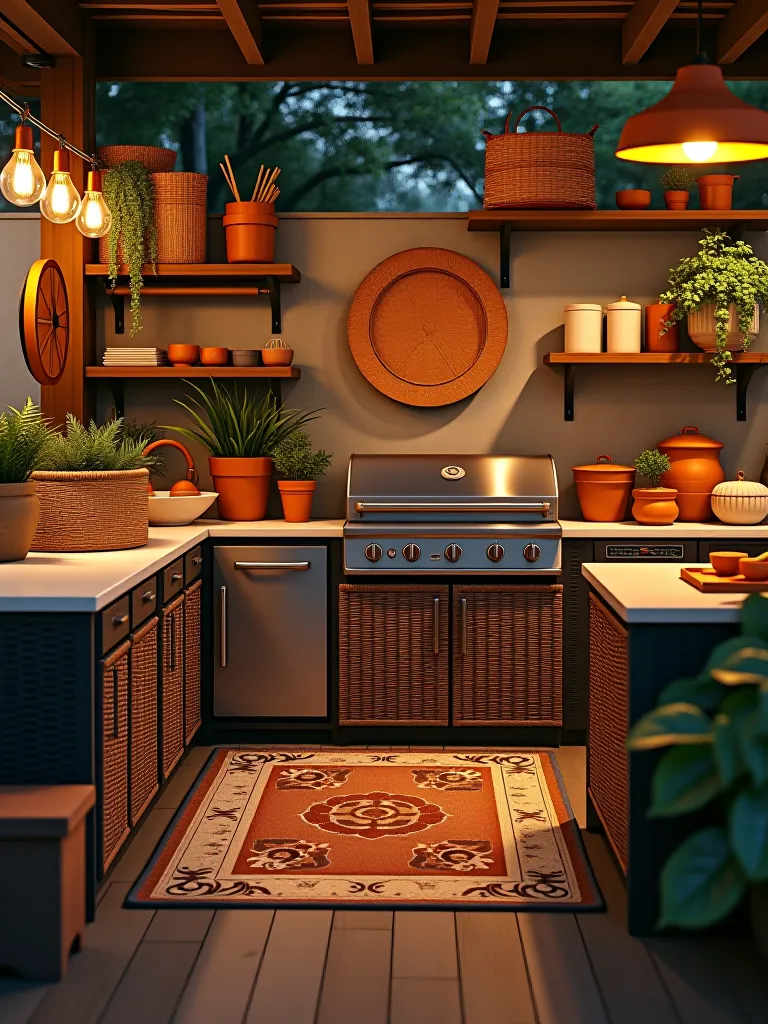
Aesthetic Enhancements
While functionality is key, don’t forget about the aesthetic aspects of your outdoor kitchen. Consider adding elements like a pergola to provide shade and structure. Planters can bring a touch of greenery to your space, reminiscent of the lush undergrowth in a temperate rainforest.
And don’t underestimate the power of ambient lighting. String lights or lanterns can create a cozy atmosphere, turning your outdoor kitchen into a magical space as enchanting as a starry Alaskan night. It’s like having your personal aurora borealis, right in your backyard.
Final Thoughts
Creating a weatherproof outdoor kitchen is like building a well-designed Alaskan homestead – it requires careful planning, the right materials, and a healthy respect for the forces of nature. We’ve traversed the landscape of durable materials, weatherproofing techniques, maintenance strategies, and design considerations. Each element plays a crucial role in ensuring your outdoor culinary haven can withstand whatever Mother Nature throws its way, from the midnight sun of summer to the deep freeze of winter.
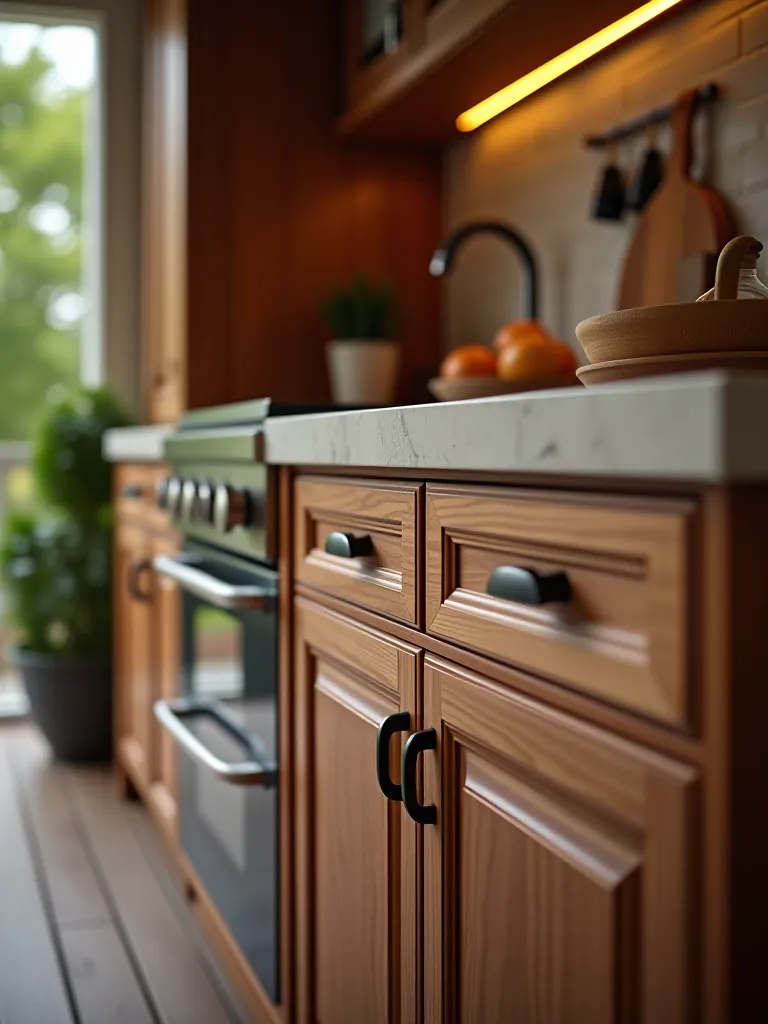
Remember, your outdoor kitchen is more than just a cooking space – it’s an extension of your home, a gathering place for friends and family, and a testament to the resilient spirit of outdoor living. By investing in quality materials, following proper maintenance routines, and implementing smart design choices, you’re creating a space that will serve you well for years to come.
So, whether you’re grilling freshly caught salmon under the aurora borealis or sipping hot cocoa around the fire pit during a winter solstice gathering, your weatherproof outdoor kitchen will be there, ready for action. It’s time to embrace the joys of outdoor cooking, no matter what the weather brings.
Now, go forth and create an outdoor kitchen that’s as sturdy as a glacier, as inviting as a cozy cabin, and as enduring as the Alaskan spirit itself. Happy cooking, and may your outdoor culinary adventures be as boundless as the Last Frontier!

